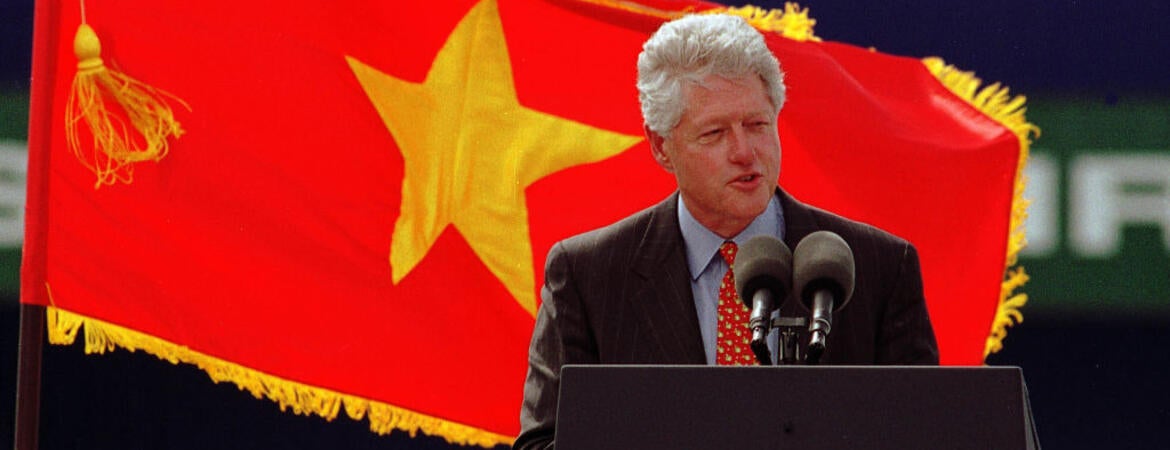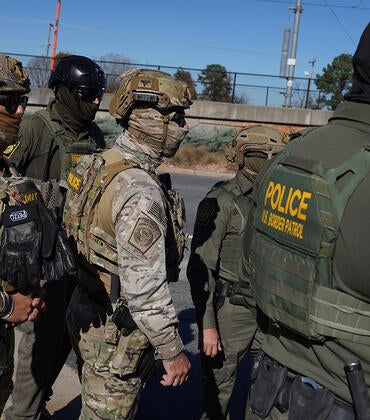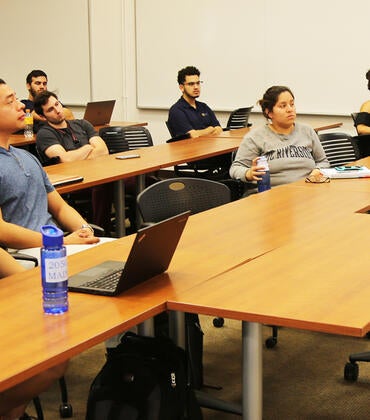
America withdrew its troops from Vietnam in 1973 and South Vietnam fell in 1975. The “fall” (or, in the official Vietnamese view the “reunification”) of Saigon was the subject of many 50th anniversary events this past spring on April 30th. This year also marks a far less-studied milestone: the 30th anniversary of the re-establishment of full diplomatic relations between the U.S. and Vietnam in July 1995. Since then, a once-feared “enemy” of the United States has become, in the language of the U.S. government in 2024, a "comprehensive strategic partner." To many Americans, especially many former South Vietnamese refugees who settled here, this turnaround was fast; for many others, especially people in Vietnam, it was disappointingly slow.
As early as April 1975, Vietnam sought to normalize relations in the interest of obtaining reconstruction funds from the U.S.; however the U.S. maintained its “trading with the enemy” embargo established in 1964. The United States maintained this embargo until 1994, when President Bill Clinton ended it in the effort to restore diplomatic relations. Two issues held up efforts to end the embargo and normalize relations: a 1973 commitment by the U.S. to provide aid for rebuilding and the status of soldiers missing in action.
The trade embargo was lifted in 1994, and formal normalization of relations occurred in 1995. By 2023, the two countries were trading $124 billion, $114 billion of which were Vietnamese goods exported to the U.S. Due to low production costs, the U.S. imports textiles from Vietnam, but increasingly high-tech goods are entering bilateral trade.
President Trump’s worldwide tariffs, including possible 20% to 46% tariffs on Vietnamese imports, pose a new challenge to U.S. - Vietnamese relations. Many in Vietnam were shocked at the president’s announcement, believing the rate had been negotiated at 11%. No final paperwork has been produced, and Trump has delayed the imposition of tariffs until Aug. 1.
We invited Vietnam scholar and UCR Professor David Biggs to weigh in on the past and current state of "rapprochement" — resumption of relations — with Vietnam. Biggs is chair of the Department of History, a former director of the UCR Southeast Asian Studies Program (see more information at the end of this article) and a professor of Southeast Asian, Vietnamese and environmental history. He authored the books "Footprints of War: Militarized Landscapes of Vietnam," and "Quagmire: Nation-Building and Nature in the Mekong Delta," that focus on war and post-war in Vietnam, and is at work on a third, "Mangrove and Megacity."
Q: In a historic context, is 20 years a short period to reach rapprochement with a country with whom the U.S. was at war?
Biggs: I think it’s incredibly short given the scale of the Vietnam War. More than 50,000 Americans died there along with more than five million Vietnamese combatants and civilians. In Vietnam’s rugged jungles and highlands, more bombs were dropped in areas the size of Riverside County than the total bombs dropped by all sides in World War 2. No war since has seen this scale of conventional bombing. If we look at earlier U.S. wars from the Civil War to the Vietnam War, what we think of as “rapprochement” has depended on the circumstances. In Germany and Japan, U.S. forces occupied both countries. Korea is still divided under an armistice. The American South entered “reconstruction” but this was dismantled in 1877. What’s most amazing to me about rapprochement with Vietnam is that the same communist government in Hanoi remained in power after 1975; and yet just 20 years later both sides were anxious to re-establish ties and put the war behind them.
Q: Was the MIA issue critical to rapprochement?
Biggs: The MIA issue was important in building people-to-people ties among U.S. and Vietnamese veterans. U.S. veterans pressured Congress in 1991 to sign the Agent Orange Act to provide healthcare to U.S. veterans who claimed exposure to chemicals like Agent Orange in Vietnam triggered myriad health problems for themselves and many severely disabled children. However, the MIA and Agent Orange issues were just one part. For both Vietnam and the U.S., a bigger concern has since the 1970s been Vietnam’s vulnerability to China’s military and economic might. A comment I heard often, especially in cafes coming from older men intrigued to meet an American speaking Vietnamese, was that with nearby neighbors like China, Vietnam could not afford to alienate economic superpowers and more “distant” countries like the U.S. This urgent need to strengthen its economy and defenses vis a vis China caused Vietnam to become closely aligned with the Soviet Union in the 1960s and, after the fall of the Soviet Union in 1991, even its former “enemy” the United States.
Q: Why didn’t the U.S. live up to its 1973 pledge to help rebuild Vietnam?
Biggs: There are specific, technical reasons documented in official government records–for example North Vietnamese troops violated a cease-fire after a six-month armistice in 1973. However, I think a more general reason stems from domestic conditions at home. Nixon was downsizing the military, closing dozens of bases not just in Vietnam but also at home in the U.S. The OPEC oil crisis brought major economic shocks to the U.S., and then in 1974 the Watergate scandal led to Nixon’s resignation from office. Under Presidents Ford and Carter, talks continued about normalization of ties, but then Vietnam’s invasion of Cambodia on Dec. 25, 1978 to topple the Khmer Rouge’s genocidal regime caused Carter to drop further talks. Only during the George H.W. Bush administration – Bush was formerly the Director of Central Intelligence in 1976 right after the war and previously served as an advisor to Nixon – did talk of normalization and Vietnam’s exit from Cambodia begin.
Q: How important were John Kerry and John McCain to reconciliation?
Biggs: The work of normalization began in the late 1980s as this was a period of glasnost or “open government” in the USSR as well as in Vietnam; and the Bush administration commenced indirect talks which accelerated after the USSR fell in late 1991. The Clinton Administration then picked up on these efforts in 1993, and it was during this time that Kerry and McCain, both Vietnam veterans – one who opposed the war and the other one of the most famous POWs – advanced efforts to normalize relations. I think both senators were important to making normalization a bi-partisan issue in the 1990s just as both were champions of veterans and supporters for Agent Orange compensation. They helped de-politicize normalization at home, but the bigger issues of China’s economic resurgence and the collapse of Soviet states were critical to motivating the Vietnamese side.
Q: To what degree have the issues of freedom of speech and suppression of political dissent created strain for U.S.-Vietnam relations?
Biggs: Human rights is always a top-tier issue in U.S.-Vietnam relations, however the U.S. has a long history of working with other countries that suppress free speech and dissent but nevertheless help the U.S. advance its strategic objectives in the world. There was Marcos and martial law in the Philippines, Suhartos’ single-party regime in Indonesia and former South Vietnamese generals like Nguyen Van Thieu, who organized coups and as president routinely suppressed free speech. While they might not state it publicly, economic and strategic concerns such as the freedom of navigation in the South China Sea trump concerns about Vietnam’s human rights record. Also, over the past three decades of my travels and work in Vietnam, I routinely heard defenders of Vietnam’s communist government explain that, in Southeast Asia, if people could choose between the forms of democracy present in Thailand, the Philippines, and Indonesia versus the prosperity and rapid economic growth witnessed in China and Vietnam, they’d choose stability and prosperity over personal freedoms.
Q: To what degree have Vietnamese goods supplanted Chinese exports for the U.S.?
Biggs: I don’t have specific numbers for this, but certainly growth by Vietnamese experiences has been exponential. As someone who first worked in Saigon as an English teacher in 1993, I witnessed the rapid shift in traffic from rivers of bicycles and cyclos then to Honda “Dream” motorcycles by 1997, a flood of motorcycles and small cars in 2005, and now roads clogged with cars. Now, a Vietnamese car — the all-electric VinFast — is even for sale in the United States! That said, we have to remember that in comparison to China, Vietnam is about the size of two Chinese provinces, but the scale of its imports to the U.S. has risen to about 1/4th of China’s.
Q: The U.S. is today considered Vietnam’s most important export market, with the U.S. having imported $114.4 billion in goods from Vietnam in 2023. It is the U.S.’ 10th-largest trading partner. How has President Trump’s move to enact heavy tariffs impacted relations - in commerce and politically?
Biggs: The tariffs discussion has been a shock in Vietnam, however it is not the only factor important to the building of ties. The U.S. has repositioned aircraft carriers to the South China Sea out of concern for the safety of shipping lanes; and China’s economic growth has prompted Japan, the Philippines and other countries to negotiate new agreements with one another and the U.S.
Q: So, you have worked in Vietnam since before the normalization of ties and witnessed many changes. What do you think of the near-future for this relationship between the U.S. and Vietnam?
Biggs: I think the near-future looks strong. One thing that I routinely found in declassified military and diplomatic records while working on my books was the respect that American observers had for the ingenuity of Vietnamese people, especially among enemy troops. They noted such things as the ability of a craftsman to fashion simple tools that helped them evade the most sophisticated American radar and surveillance; and when Vietnamese refugees arrived in the United States, American veterans like John McCain were quick to celebrate their hard-working, family-oriented values. The Vietnamese-American “success story”--of course it is more complicated than that–has perhaps done more than any American policy during and after the war to entice millions of younger Vietnamese to aspire to travel, work and live in the United States or to open the same kinds of opportunities at home. Vietnam’s Socialist government continues to draw criticism from pro-democracy groups, especially among Vietnamese Americans; but international relations depend on a constantly evolving mix of factors including economic and military. For the near-future, Vietnam’s and the United States’ strategic goals are more closely aligned.
More information on Vietnam studies at UCR
The Southeast Asian Studies Program was formed in 2003 and has been supported by the Luce Foundation. The program houses one of the largest collections of Vietnamese-language books in the U.S., features the establishment of partnerships with Vietnamese universities and — increasingly — ventures in such fields as plant science and engineering.
Biggs is currently collaborating with UCR professors including Lam Huynh (nematology) and Christina Schwenkel (anthropology) to develop new programming and widen ties between UCR and Vietnamese institutions. Both Biggs and Schwenkel came to UCR through a Luce initiative to build Southeast Asian Studies at UCR, and both have conducted extensive field work over many years there.
Featured photo, above: U.S. President Clinton speaks Nov. 19, 2000 during a visit to the International Container Terminal in Ho Chi Minh City (Saigon), Vietnam. Clinton was the first American president to visit Vietnam since the war ended in 1975. Photo by Getty Images.




